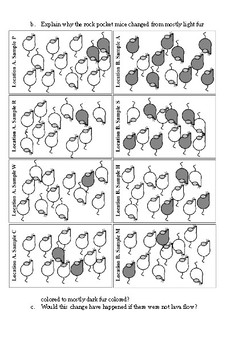

Individuals change color to blend in with the environment.Why did dark-colored rock pocket mice first appear in a population of light-colored rock pocket mice? Predators of the pocket mice hunt using what sense?ģ. How caused the unusual landscape at the Valley of Fire?Ģ. Watch the video at /rockpock and answer the questions.ġ. What are the two types of substrate that these mice live on? _.Arrange the cards in what you think is the correct order from the oldest to the most recent.Location B: Number of mice with light-colored fur _ Dark-colored fur _ Location A: Number of mice with light-colored fur _ Dark-colored fur _ View the images of the rock pocket mouse populations in each location and record the numbers for each color.

Most of the landscape consists of light-colored sand and rock, but patches of dark volcanic rocks that formed from cooling lava flows are found, separated by several kilometers of light colored substrate. There are also two major colors of substrate, or surface materials that make up the desert floor. There are two common varieties-a light-colored variety and a dark-colored variety. You can find populations of rock pocket mice all over the Sonoran Desert in the southwestern United States. And at just 15 grams, this tiny mouse weighs about as much as a handful of paper clips.

\( \newcommand\)Ī typical rock pocket mouse is about 170 millimeters long from its nose to the end of its tail, shorter than an average pencil.


 0 kommentar(er)
0 kommentar(er)
